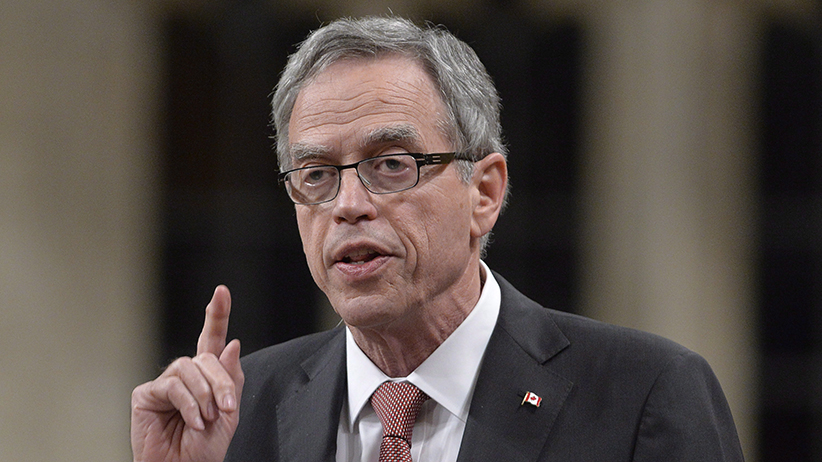A voluntary CPP plan wouldn’t solve much, but it could fix this
Without more details it’s hard to say what the Tories are thinking with their voluntary CPP plan, but they seem to be picking a fight with the insurance industry
Finance Minister Joe Oliver answers a question during Question Period in the House of Commons on Parliament Hill in Ottawa, Tuesday Sept.23, 2014 . THE CANADIAN PRESS/Adrian Wyld
Share

Last week, the federal government announced it would consider allowing Canadians to make voluntary contributions to the Canada Pension Plan (CPP). Few details are available, since Finance Minister Joe Oliver said he would consult with “experts and stakeholders” before releasing a full proposal. But even without knowing the full details, does a voluntary CPP even make sense?
Since there is so little to work with, analyzing the proposal is incredibly difficult, though Jennifer Robson’s discussion of past CPP reforms is very helpful. Whenever I analyze a policy proposal, I start by using the Public Policy Keltner List, a series of six questions that helps to clarify my thinking on the matter. The first two questions are:
- What is the policy?
- What is the policy meant to accomplish?
The second question is problematic here, because the government has given no indication of what a voluntary CPP is meant to accomplish. When we do not know what a policy is meant to accomplish, I find it useful to work backward and think of potential problems where the proposed policy makes sense as a solution. In the case of a voluntary CPP, there is at least one scenario where the proposal is a reasonable solution to a problem.
There are at least seven potential problems that any type of pension reform could try to remedy:
- Income levels: Canadians are not saving enough because there’s not enough money left over at the end of the month after the necessities of life are paid for.
- Inertia: Canadians know they should save more, but simply do not get around to it.
- Moral hazard: Canadians do not save enough because they believe others will provide for them in old age, an idea Andrew Coyne has explored.
- Malinvestment: Canadians are investing too heavily in the wrong things, such as real estate or old Nintendo games.
- Incentives: Canadians lack the proper incentives to save, or are disincentivized to save due to tax or other regulatory barriers. Alternatively, those tax or other regulatory barriers may simply cause Canadians to put their savings in the wrong things (see point 4).
- Fees: Canadians are seeing the returns on their retirement savings being eaten up by fees.
- Longevity risk: Canadians risk outliving their savings and need to be insured against the possibility. A number of Canadian insurance companies sell annuity products that insure against longevity risk. Annuities are not a particularly large market, and one reason may be due to adverse selection: Only people who believe they will live a long time are interested in purchasing these products, which pushes up their price. One way to correct for this market imperfection (if it exists), is to make investment in annuities mandatory, which is part of the logic for the existing CPP.
In this list, “Canadians” does not necessarily refer to all Canadians. Rather, it can be one or more segments of Canadians, such as young Canadians or middle-income Canadians, and so on.
If a voluntary CPP is designed anything like the existing CPP, it will be equivalent to an annuity, except it is sold by the government rather than an insurance company. The government has not explicitly stated that the voluntary CPP will be structured as an annuity, so they may have something else in mind, but, for now, that appears to be a safe working assumption. If so, the proposal would do nothing to address problems 1 through 5 on our list. However, having the government sell annuities could make sense, if you believe Canadians need to ensure against longevity risk (point 7) but the fees that insurance companies charge for these products are too high (point 6). As well, you would need to believe that adverse selection is not a significant problem in the annuity market, so any market imperfections from a voluntary approach are minor.
If you believe that the biggest problems in retirement saving is that insurance firms are overcharging for annuities, then a voluntary CPP makes a great deal of sense. If you instead believe that our pension problems lie elsewhere, then a voluntary CPP is less like pension reform and more like picking a fight with the insurance industry. It would be helpful if the government told us why it believes a voluntary CPP is needed, so we could better analyze the proposal.